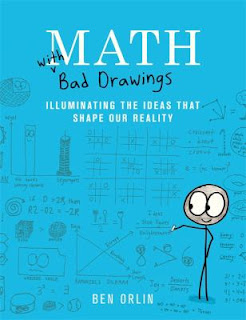The homeschool community is not of one opinion regarding Saxon Math (or much of anything, now that the movement has grown so large and diverse.) Some insist it is not rigorous enough, others insist it is boring, or too hard, or the Holy Grail of mathematics textbooks. While I don't believe any curriculum is ideal for every child at every grade level, I would like to make the case for Saxon Math. I have found it to be effective when used as directed.
Receive a coupon for $5.00 every time you spend $50.00 on used books
First, why do people not succeed using Saxon Math? Well, Saxon is different from most other curriculum choices. Teaching Saxon requires a paradigm shift if you have taught using other books. Saxon lessons are incremental and cumulative, while most math books are organized topically. Topical organization is convenient administratively, but it enables students to forget Chapter 3 topics after the test on Chapter 3, when they move on to another topic in Chapter 4. Later, these gaps from forgetting come back to bite them, as math is the most cumulative of subjects. Saxon, on the other hand, has many short lessons which introduce new topics piece by piece. The problems at the end of each lesson include a couple of problems from the new material, while the rest are review from any earlier lesson. A student cannot just be glad Chapter 3 is over and breathe easy until his gap in knowledge rears its ugly head later in the semester. The Saxon student must confront every previous topic regularly on her daily problem sets, so she decides to deal with it instead of ignoring it.
Did I say "daily problem sets" just now? Indeed! Here is where the "use as directed" part comes in. Saxon expects students to do a lesson every school day, working all problems. Did I say "all" just now? Yes. Sure, the problems tend to be in pairs by topic, but each problem tests a different aspect of the lessons. Would you take only half your prescribed medication and expect the same results as if you took as directed? Of course not! Now, of course, many of you will object that this takes too long. If your child is spending hours on a single problem set every day, you have to find out whether:
- The child is just dawdling, hoping you will give in and let them quit.(Reed,p.24)
- The child is placed at the wrong grade level in Saxon.(Ibid.)
- The child has other issues, e.g. difficulty reading word problems, anxiety, etc.
Placement is a topic for another day, but it is better to move back a grade level and have the child work problem sets that take no more than an hour in lower grades and possibly 90 minutes to 2 hours per day in Algebra 2 and above.
I was not a big believer in Saxon until I was asked to teach it at a homeschool coop. I have taught Advanced Math and Calculus, mostly to students who had also done Saxon for Algebra 2. The students who work the problem sets all week and ask questions about those problems at our semi-weekly meetings learn a lot of math. It was much harder to teach a traditional curriculum at a weekly coop, as traditional books present material in huge topical chunks--perhaps better if you have daily access to a teacher, but often overwhelming to the student doing the bulk of their work alone. I have to say that, although I was not inclined toward liking Saxon, I now have "comparison taught" and am a big fan of the Saxon homeschool texts.*
Stay tuned for future posts about placement, testing, and geometry.
_________
Source: Art Reed,
Using John Saxon's Math Books, 2007, AJ Publishers
* Saxon is no longer owned by the late John Saxon's family. The publisher's newest version for public schools has removed the integrated geometry into a separate textbook and aligned everything with Common Core. I emphatically DO NOT recommend this version. The homeschool version is still available as well, so be sure to get this version.




